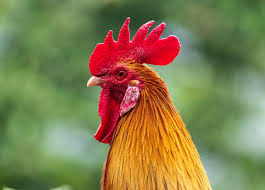Enrofloxacin
Brand Name:
Enrofloxacin
Indications & Uses:
Bacterial infections, Septicemia
Dosage Forms:
Water Soluble Powder, Premix PowderTablets/Bolus, Injection Solution
Name:
Enrofloxacin
Common Capacity:
- Tablets: 30 tabs/bottle
- Injection Solution:
- 10%; 20% concentration in 50ml, 100ml per bottle
- Water Soluble Powder:
- Enrofloxacin hydrochloride: 10%; 30% concentration in 100g, 500g, 1000g per bag
Applicable Animals:
Global Livestock Application:
- Poultry: Chickens, Ducks, Turkeys (for common bacterial infections, especially respiratory and enteric)
- Pigs: Piglets, growing pigs, breeding sows, boars (for respiratory, gastrointestinal, and urinary tract infections)
- Cattle: Calves, adult cattle (for respiratory disease, mastitis, enteritis)
- Sheep & Goats: Lambs, adult sheep/goats (for respiratory and enteric infections)
- Pets: Dogs, Cats (for various bacterial infections, including skin, respiratory, urinary, and gastrointestinal)
- Aquatic Animals: Fish, Shrimp (for bacterial diseases)
- Special Farming: Rabbits, Mink, Foxes (for common bacterial infections)
Usage and Dosage:
Dosages vary significantly depending on the animal species, the severity and type of infection, and the formulation (tablet, injection, water soluble powder). Always consult a veterinarian for specific dosage recommendations.
General Guidelines (example ranges):
- For Tablets (Oral Administration):
- Pets (Dogs & Cats): Typically 5 mg/kg body weight, once daily.
- Example: A 10 kg dog would receive 50 mg Enrofloxacin daily.
- Duration of treatment often ranges from 3 to 10 days, depending on the condition.
- Pets (Dogs & Cats): Typically 5 mg/kg body weight, once daily.
- For Injection Solutions (Intramuscular/Subcutaneous/Intravenous):
- Cattle, Sheep, Goats: 2.5 – 5 mg/kg body weight, once daily. For severe respiratory infections, dosage might be increased to 7.5 mg/kg.
- Pigs: 2.5 – 5 mg/kg body weight, once daily.
- Poultry: 10 mg/kg body weight, once daily (often administered via drinking water if used for flock treatment).
- Dogs & Cats: 2.5 – 5 mg/kg body weight, once daily.
- Duration of treatment typically 3-5 days.
- For Water Soluble Powder (Oral Administration via drinking water or feed):
- Poultry: 50-100 mg Enrofloxacin per liter of drinking water, for 3-5 days. This will vary based on water intake and concentration of the powder.
- Swine: 50-100 mg Enrofloxacin per liter of drinking water or per kg of feed, for 3-5 days.
- Growth Stages (Example for common species):
- Young/Growing Animals (e.g., Piglets, Calves, Chicks): Often require higher mg/kg doses due to faster metabolism or higher disease challenge.
- Adult Animals: Standard therapeutic doses.
- Breeding Animals: Use with caution, especially during pregnancy/lactation. Consult veterinarian.
Applicable Diseases and Symptoms:
Enrofloxacin is effective against a wide range of Gram-positive and Gram-negative bacteria, as well as Mycoplasma species. It’s used for:
- Respiratory Tract Infections:
- Pneumonia, bronchopneumonia, pleuropneumonia (e.g., pasteurellosis, mycoplasmosis in cattle, pigs, poultry).
- Chronic Respiratory Disease (CRD) in poultry.
- Gastrointestinal Tract Infections:
- Bacterial enteritis, diarrhea (e.g., E. coli, Salmonella, Clostridium perfringens).
- Urinary Tract Infections:
- Cystitis, nephritis.
- Skin and Soft Tissue Infections:
- Wounds, abscesses, pyoderma.
- Mastitis:
- Bacterial mastitis in dairy animals.
- Septicemia:
- Systemic bacterial infections (blood poisoning).
- Joint Infections:
- Arthritis caused by susceptible bacteria.
- Other bacterial diseases caused by susceptible organisms:
- Infections of the reproductive tract, bone infections.
- Salmonellosis and Colibacillosis: Common in poultry and swine.
Precautions:
- Resistance: Use judiciously to prevent the development of antibiotic resistance. Do not use for prophylaxis unless specifically indicated for disease prevention in a high-risk situation.
- Dosage Accuracy: Accurate weighing of animals and careful calculation of dosage are crucial.
- Crystalluria (in some species, especially highly concentrated urine): Ensure adequate water intake to prevent crystalluria.
- Cartilage Damage (in young, growing animals): Fluoroquinolones may cause cartilage abnormalities in young, rapidly growing animals. Use with caution in these age groups.
- Central Nervous System Effects (rare): May cause CNS stimulation in some animals, especially those with pre-existing seizure disorders.
- Drug Interactions: Avoid co-administration with other drugs that may affect absorption (e.g., antacids containing aluminum, magnesium, calcium) or metabolism.
- Withdrawal Period: Strict adherence to the specified withdrawal periods for meat and milk is critical to prevent drug residues in food products. These periods vary by country, animal species, dosage, and route of administration. Always check the specific product label.
- Storage: Store according to manufacturer’s instructions, typically in a cool, dark place, protected from light. Keep out of reach of children.
- Human Safety: Avoid accidental ingestion or self-injection. People hypersensitive to fluoroquinolones should avoid contact with the product. Wash hands after use.
Contraindications:
- Hypersensitivity: Do not use in animals known to be hypersensitive to enrofloxacin or other fluoroquinolones.
- Severe Renal or Hepatic Impairment: Use with extreme caution or avoid in animals with severe kidney or liver dysfunction.
- Young, Rapidly Growing Animals: Generally contraindicated in young dogs of certain breeds (especially large and giant breeds) during their rapid growth phase (e.g., less than 1 year of age, or 18 months for giant breeds) due to potential cartilage damage. It may be contraindicated in very young foals.
- Laying Hens (commercial production): Not recommended for use in laying hens producing eggs for human consumption due to residue concerns.
- Pregnancy/Lactation: Use with caution in pregnant or lactating animals, and only if the benefits outweigh the potential risks, as fluoroquinolones can cross the placenta and be excreted in milk.
Post-Treatment Care:
- Monitor Response: Closely monitor the animal(s) for clinical improvement after treatment. If no improvement is seen or if the condition worsens, re-evaluate the diagnosis and treatment plan.
- Complete Course: Ensure the full prescribed course of treatment is completed, even if symptoms improve, to prevent relapse and development of resistance.
- Supportive Care: Provide appropriate supportive care, including good nutrition, hydration, and a clean environment.
- Underlying Cause: Identify and address the underlying cause of the infection (e.g., vaccination programs, biosecurity measures, improved husbandry practices).
- Record Keeping: Maintain accurate records of treatments, dosages, and animal responses.
- Residue Management: Strictly adhere to withdrawal periods to ensure food safety.
Applicable Animals
Animal species suitable for this veterinary medication




